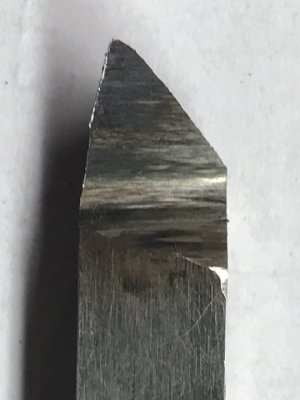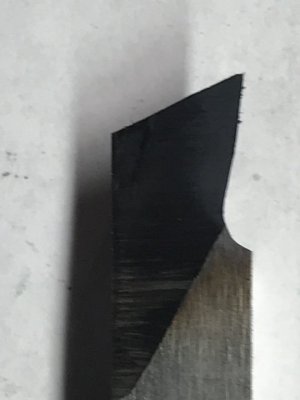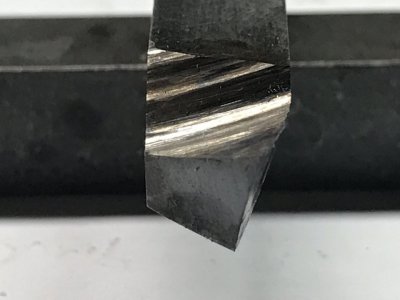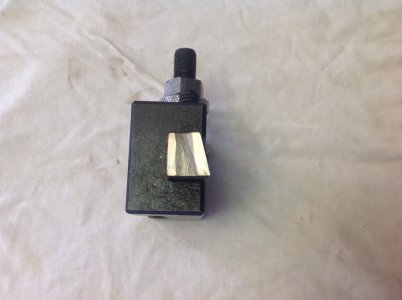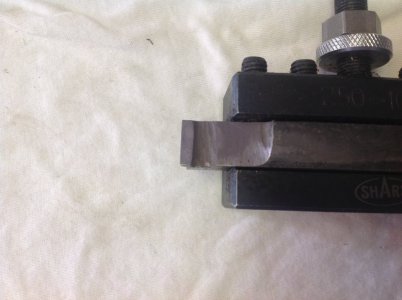- Joined
- Dec 20, 2012
- Messages
- 9,422
Okay, now you have adequate relief on both the side and end - very good!
I suggest you pay attention to flattening to top of the tool. You need to choose how much back rake you want and draw a line on your tool rest; 10-15 degrees works good. Push the tool straight into the wheel while holding the bit at the angle of the line until the top is flat. You see how the tip of the tool droops down to the end when viewed from the side? It isn't supposed to droop like that.
Please fix the top of the tool and don't grind anything else. Then let's take a look again when you're done.
I suggest you pay attention to flattening to top of the tool. You need to choose how much back rake you want and draw a line on your tool rest; 10-15 degrees works good. Push the tool straight into the wheel while holding the bit at the angle of the line until the top is flat. You see how the tip of the tool droops down to the end when viewed from the side? It isn't supposed to droop like that.
Please fix the top of the tool and don't grind anything else. Then let's take a look again when you're done.

